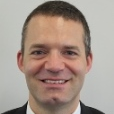Multidisciplinary Insights on Bone Healing
A special issue of Biology (ISSN 2079-7737).
Deadline for manuscript submissions: closed (1 February 2021) | Viewed by 30476
Special Issue Editors
Interests: bioceramics based bone grafting materials for regenerative biomedicine; bioceramics biocompatibility through in vitro/cytotoxicity assays, and /in vivo /implantation in animal model; bone cutting device evaluation, both for rotatory instruments and piezosurgical osteotomes; microsurgical flap reconstruction for head & neck defects; deep learning and computing technology in maxillo-facial surgery, head & neck surgical oncology
Special Issues, Collections and Topics in MDPI journals
Interests: effects of physical energy applied to biological systems, in particular evaluation of the effects of pulsed electromagnetic fields and ultrasound on bone tissue and cartilage in animal models in vivo; histomorphometry and histology on bone; cartilage and teeth; effect of drugs on bone metabolism; bone regeneration in implant dentistry and surgery
Special Issue Information
At the basis of the bone healing process there is a sophisticated multifactorial “system” composed of both macro- and microscopic agents that interact each other in order to obtain a recovery of the correct morphological and functional features. Bone-tissue-specific agents and extra-bone factors can influence the final outcome at several levels; all of them are characterized by complex and multidisciplinary perspectives that have raised many questions that have yet to be fully elucidated. The consequence has been the raising of the curtain on this fascinating topic, which must be looked at from different angles in order to be correctly framed.
Basic research with a transitional approach and clinical applications about the bone healing process are manifold: fracture can be either iatrogenic (antiresorptive therapies) or spontaneous, involving a healthy or an impaired bone; moreover, adequate bone healing of osteotomic surfaces is essential in several surgical specialties. Interdisciplinarity between pre-clinical (e.g., the interaction of tissue and biophysical energy), medical (e.g., innovative pharmacological protocols) and surgical specialties, as well as regenerative medicine strategies, may result in a common enrichment in terms of knowledge of bone healing processes and an improvement in applying these notions for the safety of patients. We hope that researchers with different areas of expertise will consider contributing to this Special Issue.
Dr. Alexandre Anesi
Dr. Francesco Cavani
Guest Editors
Manuscript Submission Information
Manuscripts should be submitted online at www.mdpi.com by registering and logging in to this website. Once you are registered, click here to go to the submission form. Manuscripts can be submitted until the deadline. All submissions that pass pre-check are peer-reviewed. Accepted papers will be published continuously in the journal (as soon as accepted) and will be listed together on the special issue website. Research articles, review articles as well as short communications are invited. For planned papers, a title and short abstract (about 100 words) can be sent to the Editorial Office for announcement on this website.
Submitted manuscripts should not have been published previously, nor be under consideration for publication elsewhere (except conference proceedings papers). All manuscripts are thoroughly refereed through a single-blind peer-review process. A guide for authors and other relevant information for submission of manuscripts is available on the Instructions for Authors page. Biology is an international peer-reviewed open access monthly journal published by MDPI.
Please visit the Instructions for Authors page before submitting a manuscript. The Article Processing Charge (APC) for publication in this open access journal is 2700 CHF (Swiss Francs). Submitted papers should be well formatted and use good English. Authors may use MDPI's English editing service prior to publication or during author revisions.
Keywords
- bone healing
- bone regeneration
- bone diseases and related pathologies
- bone tissue engineering
- bone substitute
Benefits of Publishing in a Special Issue
- Ease of navigation: Grouping papers by topic helps scholars navigate broad scope journals more efficiently.
- Greater discoverability: Special Issues support the reach and impact of scientific research. Articles in Special Issues are more discoverable and cited more frequently.
- Expansion of research network: Special Issues facilitate connections among authors, fostering scientific collaborations.
- External promotion: Articles in Special Issues are often promoted through the journal's social media, increasing their visibility.
- e-Book format: Special Issues with more than 10 articles can be published as dedicated e-books, ensuring wide and rapid dissemination.
Further information on MDPI's Special Issue polices can be found here.
Related Special Issue
- Multidisciplinary Insights on Bone Healing (Volume II) in Biology (11 articles)







